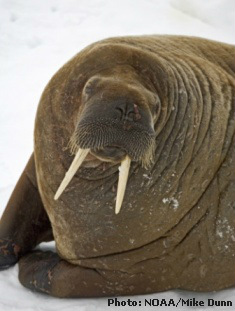Researchers
have identified a previously unknown species
of humpback dolphin living off the coast of Australia. This is exciting
in itself, but could also be an important first step in efforts to
conserve the dwindling numbers of
dolphins.
As
Care2 reported last year,
when it comes to the Endangered Species List, some animals stand out as
celebrities: polar bears, giant pandas, rhinos and snow leopards, for
example. But sadly, the list is so extensive that there are many species
you may never have suspected are endangered.
The dolphin is one of those species.
Researchers
have identified four species
in the humpback genus: the Atlantic humpback dolphin, found in waters
off West Africa; the Indo-Pacific humpback, whose habitat ranges from
the central to western Indian Ocean; another species of Indo-Pacific
humpback, which inhabits the eastern Indian and western Pacific Oceans;
and this fourth, previously unknown, Australian species.
Will this new discovery save all these dolphins from extinction? That is indeed the hope.
The humpback dolphin is named for an unusual hump just below its dorsal fin.
The researchers say the discovery will improve decision-making about
conservation policies to protect the dolphins’ genetic diversity and
their habitats.
Discovery of the Australian humpback dolphin is announced in the latest issue of
Molecular Biology.
An international team, including researchers from the Wildlife
Conservation Society and the American Museum of Natural History,
analyzed samples from humpback dolphins found from the eastern Atlantic
to the western Pacific oceans, looking for significant variations in
DNA.
The team also compared physical features from 180 humpback dolphin
skulls found on beaches in Atlantic and Pacific regions or from museum
collections and concluded that this is indeed a new, genetically
distinct species.
The newly identified species grows to 2.5 meters in length and ranges from dark gray to pink or white in color.
From
The Telegraph:
The yet-to-be-named species has been
identified through a decade-long scientific collaboration that involved
genetic mapping and the physical examination of hundreds of specimens.
The process, which has led to what scientists call a ‘split,’ has
revealed that rather than just two species of humpback dolphins in the
world there are in fact at least four.
Guido Parra, who co-authored the report
that revealed the dolphin to the world, has called for the urgent
re-evaluation of the species’ conservation status, and told the
Telegraph he has serious concerns for its long-term survival.
Parra explained even when there was believed to be only one species
of humpback dolphin in the Indian and Pacific Oceans, that species was
considered near threatened. Now, with the reclassification in to four
species, Parra believes that they should be reclassified as highly
vulnerable, or even endangered.
One major threat to the dolphin off the coast of Australia is habitat
degradation due to coastal development and mining and resource
exploitation, including shipping associated with mining developments.
According to Scientific American,
there are six coal export-related development or expansion proposals
under assessment by the Great Barrier Reef Marine Park Authority. It
seems that Australia’s coal industry wants to build a series of ports
adjacent to the reef to expedite the exportation of their toxic
product.
Even worse, Australian local media is reporting that members of the
body charged with protecting the Great Barrier Reef, one of the habitats
in which the dolphin is found, have links to mining and resource
companies and could benefit from port developments.
Australian environment minister Greg Hunt
ordered an inquiry
into the conflict of interest allegations yesterday. Hopefully, this
will lead to restraining orders on those coal companies, instead of yet
another senseless destruction of nature by mankind.












